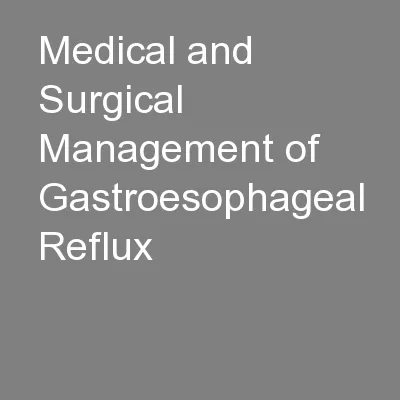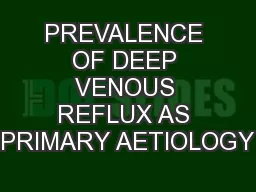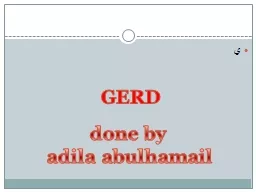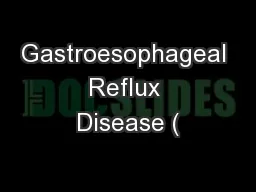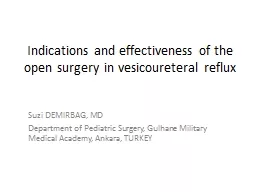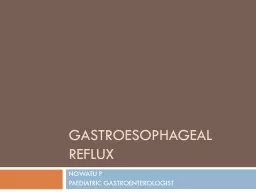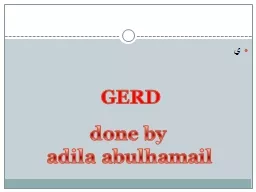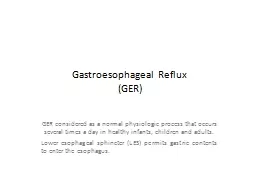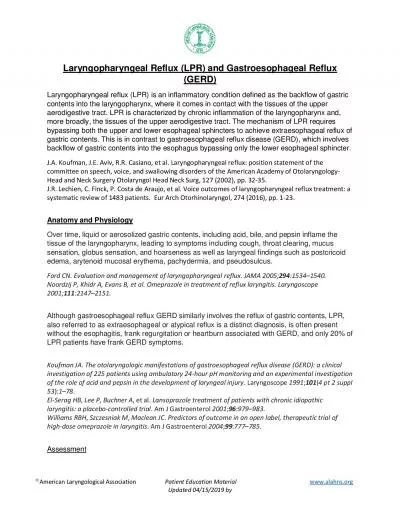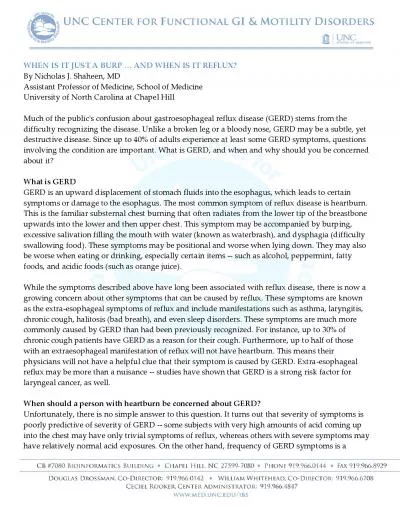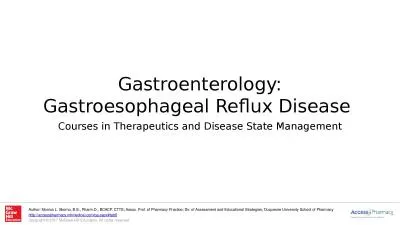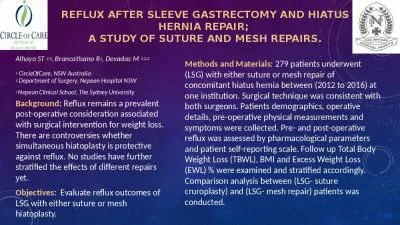PPT-Medical and Surgical Management of Gastroesophageal Reflux
Author : liane-varnes | Published Date : 2016-09-04
Edward Auyang MD MS FACS Assistant Professor of Surgery Director of Minimally Invasive Surgery Residency Program Director General Surgery Disclosures No financial
Presentation Embed Code
Download Presentation
Download Presentation The PPT/PDF document "Medical and Surgical Management of Gastr..." is the property of its rightful owner. Permission is granted to download and print the materials on this website for personal, non-commercial use only, and to display it on your personal computer provided you do not modify the materials and that you retain all copyright notices contained in the materials. By downloading content from our website, you accept the terms of this agreement.
Medical and Surgical Management of Gastroesophageal Reflux: Transcript
Download Rules Of Document
"Medical and Surgical Management of Gastroesophageal Reflux"The content belongs to its owner. You may download and print it for personal use, without modification, and keep all copyright notices. By downloading, you agree to these terms.
Related Documents

